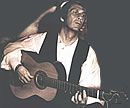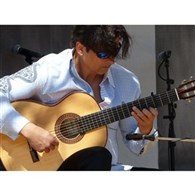Welcome to one of the most active flamenco sites on the Internet. Guests can read most posts but if you want to participate click here to register.
This site is dedicated to the memory of Paco de Lucía, Ron Mitchell, Guy Williams, Linda Elvira, Philip John Lee, Craig Eros, Ben Woods, David Serva and Tom Blackshear who went ahead of us.
We receive 12,200 visitors a month from 200 countries and 1.7 million page impressions a year. To advertise on this site please contact us.
|

|
|
Song accompaniment — I need help
|
You are logged in as Guest
|
|
Users viewing this topic: none
|
|
Login  | |
|

   
Ricardo
Posts: 14806
Joined: Dec. 14 2004
From: Washington DC

|
 RE: Song accompaniment — I need help (in reply to Goldwinghai) RE: Song accompaniment — I need help (in reply to Goldwinghai)
|
|
|
Going down the dancer rabbit hole now??? 
This is an arrangement of solea por baile which is pretty standard, and I call this music “slowlea” and my thoughts are detailed in lots of stuff in the archives. Rather than point you there we can walk through your recording since we have it here.
The beginning is a falseta 3 compases long. What the dancer wants here is any falseta or compas of that length at THIS TEMPO, ie slow like 70bpm or so. The basic bass line arp phrase ABD/CEG/FEF/E major arpeggio remate works fine for example, but doing variations rather than just repeat 3 times is ideal.
The singer starts “Le Le Le” called the salida or temple, a warm up for the voice. All you have to play is that basic compas phrase that includes the bass line arp phrase at the end: chords EEF/FFF/bass line arpeggio here FEF/E remate. This singer concludes after only two compases but keep in mind some singers might extend this longer.
Then there is one compas phrase played alone. The guitarist here plays only E chord until count 8, much like a llamada, but it’s not the most typical thing. Most often a dancer will do a llamada here or after that compas. The single compas simply ensures that the singer is done. The llamada is meant to signal the singer for letras, however it has evolved into a show off footwork dramatic statement to introduce the dancer’s bravado and could go on and on for several compases of high energy 16th note strumming. Wooopy!
Next the letra. This a standard form based on the 4 line verse structure of Joaquin de Paula 1 from canteytoque.es solea analysis. The ridiculous slow tempo (70bpm vs the origianal around 130bpm+) has distorted the cante to a point where the singers have learned to simply improvise a pseudo melody that fits the chord progression. Any type of 4 line solea verse might work but it has to be forced to fit so the original cantes are but a shadow surrounded by weird extensions and melismas....but I digress. You have to simply know the chord structure here. This is it:
E-E-E7/E-E-E7/E-E(g# bass note) hold/Am remate. The guitarist here goes to G at 1:00, which is wrong, but the singer is not great so no biggie.
Am-G-F/E remate/FEF arpeggio as before/E remate
One compas phrase played alone as above after the salida. Sometimes footwork is done here so I treat this as a one compas llamada.
Repeat the first two lines of verse, same chords and structure then comes the cambio at 1:39:
E-E-G7/G7-G7-G7/G7-G7 hold/C major remate
AM-G-F/E remate/FEF arp as before/E remate
Repeat those last two lines of verse and its over.
This structure is a total of 9 compases. I have worked with many dancers that don’t want the one compas alone after the first two lines of verse and instead repeat right away with no footwork or anything. This results in 8 compas structure for the letra. It’s not the most typical thing and the dancer might first tell the singer they don’t want a “respiro” in the letra. (Sure, as if they actually care about the singer’s need for a breath of air anyway haha!)
So what happens at 2:14 is they splice right into Solea por buleria tempo escobilla starting on beat 12. This is NEVER done. Normally there would be a llamada or another falseta or something to bridge into the new tempo. As you can hear from then on is a repeating chord progression (FFF/CCC/FFF/EEE) used as back drop for footwork. Ideally you stay metronome even here, it’s like 170bpm or something not sure. Often this speeds up with a llamada sort of what he does at 3:39. Again there are more clear ways to do this.
From there to the end it’s bulerias up at tempo 210bpm or so. Most dancers speed up and do a cierre to end, or walk off the stage.
_____________________________
CD's and transcriptions available here:
www.ricardomarlow.com
|
|
|
|
REPORT THIS POST AS INAPPROPRIATE |
Date Jan. 29 2019 15:50:44
 |
|

   
tk
Posts: 524
Joined: Jun. 15 2006

|
 RE: Song accompaniment — I need help (in reply to Ricardo) RE: Song accompaniment — I need help (in reply to Ricardo)
|
|
|
quote:
Going down the dancer rabbit hole now???
This is an arrangement of solea por baile which is pretty standard, and I call this music “slowlea” and my thoughts are detailed in lots of stuff in the archives. Rather than point you there we can walk through your recording since we have it here.
The beginning is a falseta 3 compases long. What the dancer wants here is any falseta or compas of that length at THIS TEMPO, ie slow like 70bpm or so. The basic bass line arp phrase ABD/CEG/FEF/E major arpeggio remate works fine for example, but doing variations rather than just repeat 3 times is ideal.
The singer starts “Le Le Le” called the salida or temple, a warm up for the voice. All you have to play is that basic compas phrase that includes the bass line arp phrase at the end: chords EEF/FFF/bass line arpeggio here FEF/E remate. This singer concludes after only two compases but keep in mind some singers might extend this longer.
Then there is one compas phrase played alone. The guitarist here plays only E chord until count 8, much like a llamada, but it’s not the most typical thing. Most often a dancer will do a llamada here or after that compas. The single compas simply ensures that the singer is done. The llamada is meant to signal the singer for letras, however it has evolved into a show off footwork dramatic statement to introduce the dancer’s bravado and could go on and on for several compases of high energy 16th note strumming. Wooopy!
Next the letra. This a standard form based on the 4 line verse structure of Joaquin de Paula 1 from canteytoque.es solea analysis. The ridiculous slow tempo (70bpm vs the origianal around 130bpm+) has distorted the cante to a point where the singers have learned to simply improvise a pseudo melody that fits the chord progression. Any type of 4 line solea verse might work but it has to be forced to fit so the original cantes are but a shadow surrounded by weird extensions and melismas....but I digress. You have to simply know the chord structure here. This is it:
E-E-E7/E-E-E7/E-E(g# bass note) hold/Am remate. The guitarist here goes to G at 1:00, which is wrong, but the singer is not great so no biggie.
Am-G-F/E remate/FEF arpeggio as before/E remate
One compas phrase played alone as above after the salida. Sometimes footwork is done here so I treat this as a one compas llamada.
Repeat the first two lines of verse, same chords and structure then comes the cambio at 1:39:
E-E-G7/G7-G7-G7/G7-G7 hold/C major remate
AM-G-F/E remate/FEF arp as before/E remate
Repeat those last two lines of verse and its over.
This structure is a total of 9 compases. I have worked with many dancers that don’t want the one compas alone after the first two lines of verse and instead repeat right away with no footwork or anything. This results in 8 compas structure for the letra. It’s not the most typical thing and the dancer might first tell the singer they don’t want a “respiro” in the letra. (Sure, as if they actually care about the singer’s need for a breath of air anyway haha!)
So what happens at 2:14 is they splice right into Solea por buleria tempo escobilla starting on beat 12. This is NEVER done. Normally there would be a llamada or another falseta or something to bridge into the new tempo. As you can hear from then on is a repeating chord progression (FFF/CCC/FFF/EEE) used as back drop for footwork. Ideally you stay metronome even here, it’s like 170bpm or something not sure. Often this speeds up with a llamada sort of what he does at 3:39. Again there are more clear was to do this.
From there to the end it’s bulerias up at tempo 210bpm or so. Most dancers speed up and do a cierre to end, or walk off the stage.
Man, your knowledge of Flamenco surpasses anyone's.... amazing. You turned Flamenco into Science LOL, I wish I had 1/10th of it!
_____________________________
TK
http://www.youtube.com/user/Tsolakk
|
|
|
|
REPORT THIS POST AS INAPPROPRIATE |
Date Jan. 31 2019 15:32:30
 |
|
 New Messages New Messages |
 No New Messages No New Messages |
 Hot Topic w/ New Messages Hot Topic w/ New Messages |
 Hot Topic w/o New Messages Hot Topic w/o New Messages |
 Locked w/ New Messages Locked w/ New Messages |
 Locked w/o New Messages Locked w/o New Messages |
|
 Post New Thread
Post New Thread
 Reply to Message
Reply to Message
 Post New Poll
Post New Poll
 Submit Vote
Submit Vote
 Delete My Own Post
Delete My Own Post
 Delete My Own Thread
Delete My Own Thread
 Rate Posts
Rate Posts
|
|
|
Forum Software powered by ASP Playground Advanced Edition 2.0.5
Copyright © 2000 - 2003 ASPPlayground.NET |
0.078125 secs.
|


 Printable Version
Printable Version








 New Messages
New Messages No New Messages
No New Messages Hot Topic w/ New Messages
Hot Topic w/ New Messages Hot Topic w/o New Messages
Hot Topic w/o New Messages Locked w/ New Messages
Locked w/ New Messages Locked w/o New Messages
Locked w/o New Messages Post New Thread
Post New Thread